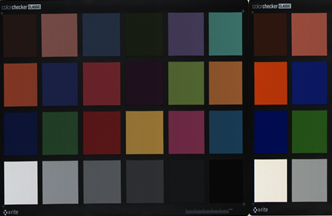
ProSensus is pleased to announce that Alex Nguyen and Kristin Wallace will be participating at the AIChE (Virtual) Spring Meeting 2021.
Alex will present “Maximizing Batch Yield in the Presence of Upstream Disturbances with Multivariate Modeling and Numerical Optimization” on Tuesday, April 20, 2021 at 2:30 PM (Eastern). This presentation builds upon John MacGregor‘s popular Golden Batch blog, and will be part of the Big Data Analytics and Smart Manufacturing II session.
Kristin will present “Leveraging Digital Image Data for Real-Time Inspection & Quality Prediction” on Thursday, April 22, 2021 at 3:20 PM (Eastern). This presentation will be part of the Emerging Technologies in Data Analytics II session.
Additionally, Kristin will co-chair the following sessions alongside Alix Schmidt of Dow Chemical:
- Big Data Analytics – Industry Perspective I – Tuesday, April 20, 2021 4:00 PM (Eastern)
- Big Data Analytics – Industry Perspective II – Thursday, Apr 22, 2021 10:30 AM (Eastern)
Abstracts
Maximizing Batch Yield in the Presence of Upstream Disturbances with Multivariate Modeling and Numerical Optimization
Alex Nguyen, Marlene Cardin, Monica Salib & Kristin Wallace. ProSensus. Burlington, ON, Canada.
Tightly controlled batch processes typically aim to replicate “optimized” results by restricting variation from an established operating profile. However, this operating strategy, by design, limits the ability to adapt to process disturbances. Even a small relaxation of control limits on key variables can make a significant impact on the ability to achieve the desired final batch quality in the presence of a disturbance.
This presentation will include a batch reactor case study that demonstrates a 40% predicted improvement in process yield by adjusting the pre-established operating profile to account for a feed quality disturbance using multivariate analysis (MVA) and numerical optimization.
In this application, a PCA model is developed to reduce the dataset from the upstream process to a small number of latent variables that are easily monitored on a score plot for any feed quality disturbance to the downstream batch reactor. A multi-block PLS is then developed to correlate upstream conditions (from the PCA model results) and batch reactor process conditions to final batch yield. Next, numerical optimization is performed to calculate the batch operating profiles that will maximize batch yield.
Finally, the optimization results are compared to the pre-established operating profile results.
This presentation will introduce the concepts of MVA in the context of the case study, and will discuss typical challenges and dataset limitations for tightly controlled batch processes.
Leveraging Digital Image Data for Real-Time Inspection & Quality Prediction
Kristin Wallace, Marlene Cardin, & Michael Haagsma. ProSensus. Burlington, ON, Canada.
As the price of machine vision hardware becomes more affordable, many manufacturers are seeking to leverage digital image data to achieve a variety of analytics and automation goals.
This presentation will discuss trends, advancements and considerations for effectively implementing color, thermal, 3D and polarized imaging to intelligently capture a variety of visual and non-visual product and process characteristics. Algorithms for calculating advanced image features and combining these features to predict key metrics will also be discussed.
Examples across a variety of industries will be provided to illustrate real-time monitoring and soft-sensor quality prediction accomplished through machine vision.
Request a Copy
Couldn’t attend AIChE Spring 2021? Use the following two forms to request a copy of either the Batch Yield or Machine Vision presentation.
Read the Related Case Studies
For further information on maximizing batch yield, read John MacGregor’s Golden Batch blog post.
For further information on machine vision, read the Off-Line and On-Line vision system case studies.




